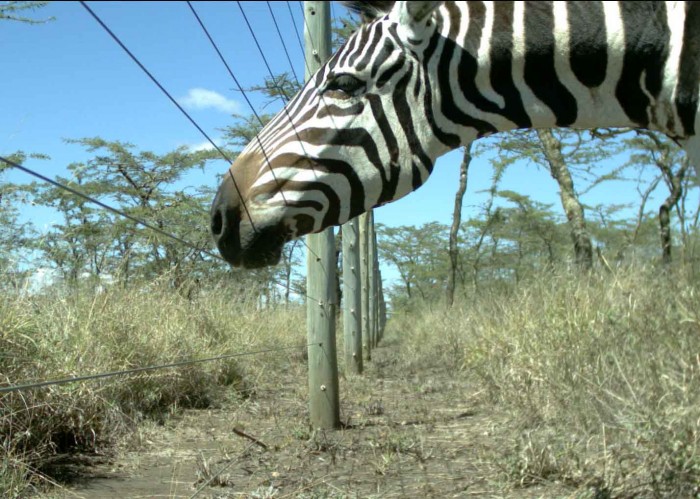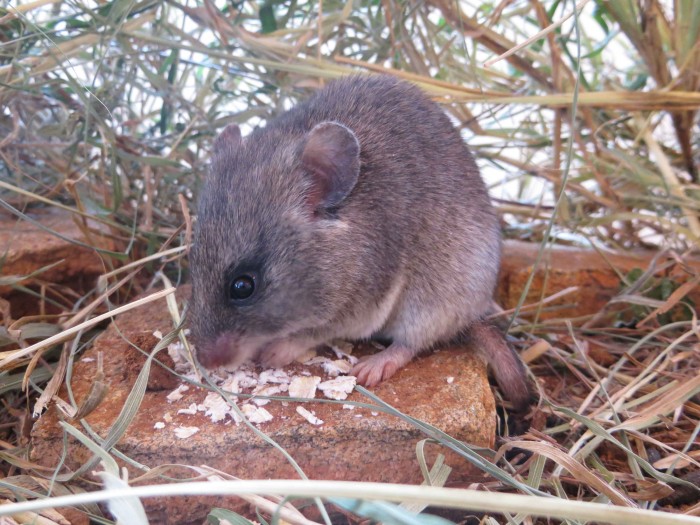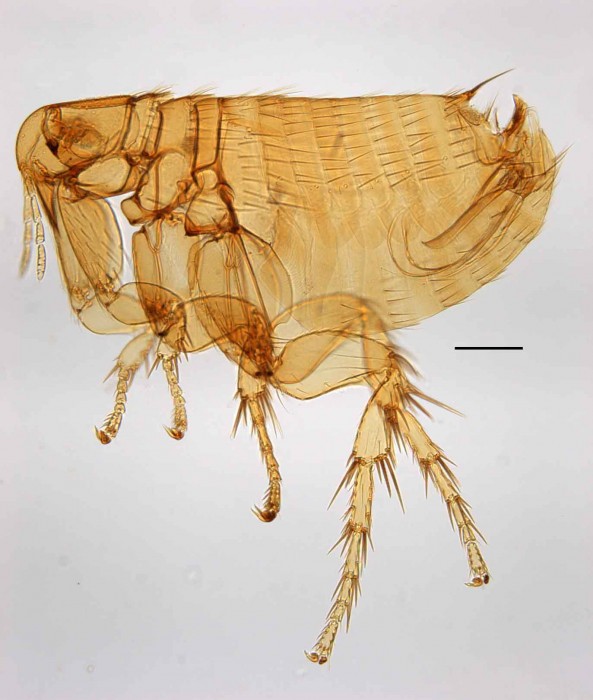For want of a horse (and zebras, impalas, elephants…)

Smithsonian scientists found that when large wildlife, such as zebras, elephants and giraffes, decline on the African savanna, either due to a decreasing population or human made barriers like roads and fences, it can lead to a significant increase in rodents, which often carry disease-causing bacteria dangerous to humans. (Photo by Duncan Kimuyu)
When large animals disappear from the landscape, smaller ones surge in numbers–including parasites that harbor deadly diseases.
Populations of large wildlife are declining around the world, while zoonotic diseases (those transmitted from animals to humans) are on the rise. A team of Smithsonian scientists and colleagues have discovered a possible link between these distressing trends. They found that in East Africa, the loss of large wildlife directly correlated with a significant increase in rodents, which often carry disease-causing bacteria dangerous to humans. The team’s research is published in the Proceedings of the National Academy of Sciences, April 28.
“Our study shows us that ecosystem health, wildlife health and human health are all related,” said Kristofer Helgen, curator of mammals at the Smithsonian’s National Museum of Natural History and co-author of the research.
Large animals, such as elephants, giraffes, antelope and zebras, have a profound influence on their ecosystems by feeding on vast amounts of vegetation and compacting and disturbing soil. As populations of these large species decline, the ecosystems they once dominated change in many ways. The team’s main question was whether the loss of large wildlife influences the risk of people contracting diseases spread by rodents—a pressing question, as more than 60 percent of infectious human diseases are zoonotic.
“Understanding the linkages between biodiversity loss and zoonotic disease is important for both public health and nature conservation programs,” said Hillary Young, former Smithsonian post-doctoral fellow and current assistant professor at the University of California, Santa Barbara. “While this correlation has been the topic of much scientific debate, ours is one of the only studies to offer clear experimental evidence.” Young is the lead author of the research paper.
Using 24 acres of savanna that had been fenced off for 15 years to keep large animals out in central Kenya, the scientists examined rodent populations inside and outside the area for three years. They also tracked the presence of Bartonellainfections in the rodents and their fleas. Bartonella, a group of bacteria found around the world, can cause bartonellosis in humans—an infectious disease that can lead to joint swelling, liver damage, memory loss and other symptoms.
The team regularly trapped rodents in the area, represented by several species of mice, rats and gerbils. Each rodent was identified to species, sexed, weighed and marked. A blood sample and fleas, if they were present, were collected from each rodent for testing before it was released where it was captured.
The team found that rodent and, consequently, flea abundance doubled inside the area that excluded large wildlife. Without having to compete with large animals for food, the rodent population grew twofold. When the rodents and fleas in the area doubled, the team found that those infected with Bartonelladoubled as well.
The removal of large wildlife from the ecosystem could be directly linked to the increase in rodents and the rodent-borne disease, thus increasing risk to humans. These results suggest that a partial solution to problems of rodent-borne disease could come in the form of wildlife conservation.
“Africa’s large wildlife faces many threats—elephants, rhinos and other large mammals continue to decline in the face of growing human populations, expanding agriculture and the impacts of poaching and wildlife trade,” said Helgen. “While we know that conservation is good for wildlife and for economies reliant on tourism, our study shows a less-intuitive dimension of conservation that could greatly benefit the people living alongside wildlife.”
This study is the first of several more to come. The team plans to expand its research to a wider suite of infectious diseases to see which might respond similarly and which do not. They will also undertake further studies not only in carefully controlled experimental sites but in the “real world” where humans have already altered the landscape and eradicated much of the large wildlife.
The team’s research has implications well beyond Africa. “While rodent-borne diseases are a major issue in Africa, they are everywhere—Europe, Asia, North and South America,” Young said. “What we find here may very well be applicable in other parts of the world.”

Smithsonian scientists found that when large wildlife was excluded from a savanna ecosystem in Africa, the rodent and, consequently, flea abundance doubled. When the rodents and fleas in the area doubled, those infected with Bartonella doubled as well. (Photo by Hillary Young)
Micaela Jemison of Smithsonian Science sat down with Helgin and Young for a follow-up on their research.
Why were you interested in looking at the connection between removing large animals and disease risk?
Young: We know that large animals have strong impacts on many parts of their ecosystems including plant growth rates, nutrient cycling and the other animals in their community. So it was intuitive to imagine that large wildlife might also have an impact on disease risk in a landscape.
Helgen: We understand some of the most important infectious diseases in human history came to us from animals, in many cases from wildlife. We also know that certain animals, like rodents, have been more important than others in spreading diseases to humanity. Knowing that rodents have been found to increase in abundance in the past once large animals have been removed from a system, it makes it imperative for us to understand how disease fits into this disturbance relationship. Knowing how these relationships work could allow us to predict disease outcomes and develop more effective management goals.
Q: What diseases did you track and how did you determine the risk factor?
Young: We focused on a group of bacteria called Bartonella that is often carried by the fleas found on rodents such as mice, rats and gerbils. When transmitted to humans some of these bacteria can cause a sickness called Bartonellosis, which can include symptoms such as memory loss, spleen and liver damage, and heart endocrinosis. We chose to study this particular zoonotic disease because it is very common in this African system and is also found worldwide.
We trapped rodents over a period of three years both in areas where large animals still roamed and where they had been excluded. The doubling in disease risk from Bartonella in a landscape with no large wildlife is very straightforward. We found that the number of rodents doubled in areas where there were no large animals and thus the number of infected fleas in those areas had also doubled. The proportion of infected fleas on each rodent and the percentage of rodents harboring those fleas remained the same between areas with or without large animals, just the overall abundance of the two doubled in areas without large wildlife. So with more rodents and thus more infected fleas existing in a landscape without large animals, the risk of human disease also increases.
Q: But why do the rodents increase in number in the absence of large animals such as elephants and impala?
Helgen: All these large mammals have outsized effects on the environment in ways you can hardly imagine. What they eat, they way they move, and what they leave behind have huge effects on the soil, the vegetation, and other animals. So when they are not there the rodent population increases because there is more food and other resources for them. Understanding the relationships between the largest mammals, smaller species and their environment can not only explain these changes but also can help us predict what might happen to the infectious disease dynamics in these systems.
Q: How are the results from this study different from what we previously knew about disease risk and environmental disturbance?
Young: Apart from the number of rodents and infected fleas doubling, our other key finding is that the diversity of the rodent population did not change between areas with or without large wildlife. In the past, many studies have described complex relationships between the risk of various diseases and changes in species diversity and richness in a landscape, not just with rodents but also with a whole range of animals. Our experimental study shows, at least for Bartonella, that disease can operate by a simple abundance pathway.
Helgen: We would not have been able to realize this without the range of rodent and flea experts who were a part of this study. It wasn’t just a matter of catching rodents and automatically knowing what species we had caught; we really had to work hard at identifying not only the rodent species, through close comparisons using museum specimens and genetic analysis, but flea species as well. The result was a really detailed examination of how these communities work, which helped us to decipher some of these patterns and relationships. It speaks to the importance of working as a team to combine field, museum, and laboratory approaches.
Q: Can we mitigate this increased disease risk??
Young: This study suggests that wildlife conservation could be a management strategy to reduce the risk of this group of diseases. In this case, conservation actions that we normally would use primarily to protect large wildlife species, or to reduce human-wildlife conflict, will likely not only have benefits for wildlife, ecotourism and the environment, but might also have benefits to human health.
We think this phenomenon is unlikely to be restricted just to Africa; rodent-borne diseases are worldwide and are in America too. We also have rodent-borne diseases, such as hantavirus and Lyme disease in the United States. We just don’t often don’t think about rodent-borne diseases as being in our backyard. Even for the best studied of these diseases, we don’t yet completely understand the pathways by which they operate, but research like this may help us understand how the disturbance we humans cause in an ecosystem can affect these diseases.
Helgen: The scientific community more and more has come to appreciate that you cannot separate concepts of ecosystem health, wildlife health, and human health from each other. We now understand, as I think is intuitive for most people, that these things are related.
We really do think we have found a general and very powerful explanation for how disease risk in natural environments can work. Our next task is to leave the controlled experimental design and see if this pattern remains in the real world. This is what we are doing now by studying these relationships in landscapes people are using, and seeing if human activities like agriculture and other changes in land use also affect this pattern—not only with Bartonella, but with a whole range of diseases.

Smithsonian scientists found that when large wildlife was excluded from a savanna ecosystem in Africa, the rodent and, consequently, flea abundance doubled. When the rodents and fleas in the area doubled, those infected with Bartonella doubled as well. (Photo by Michael Hastriter)
Posted: 30 April 2014



